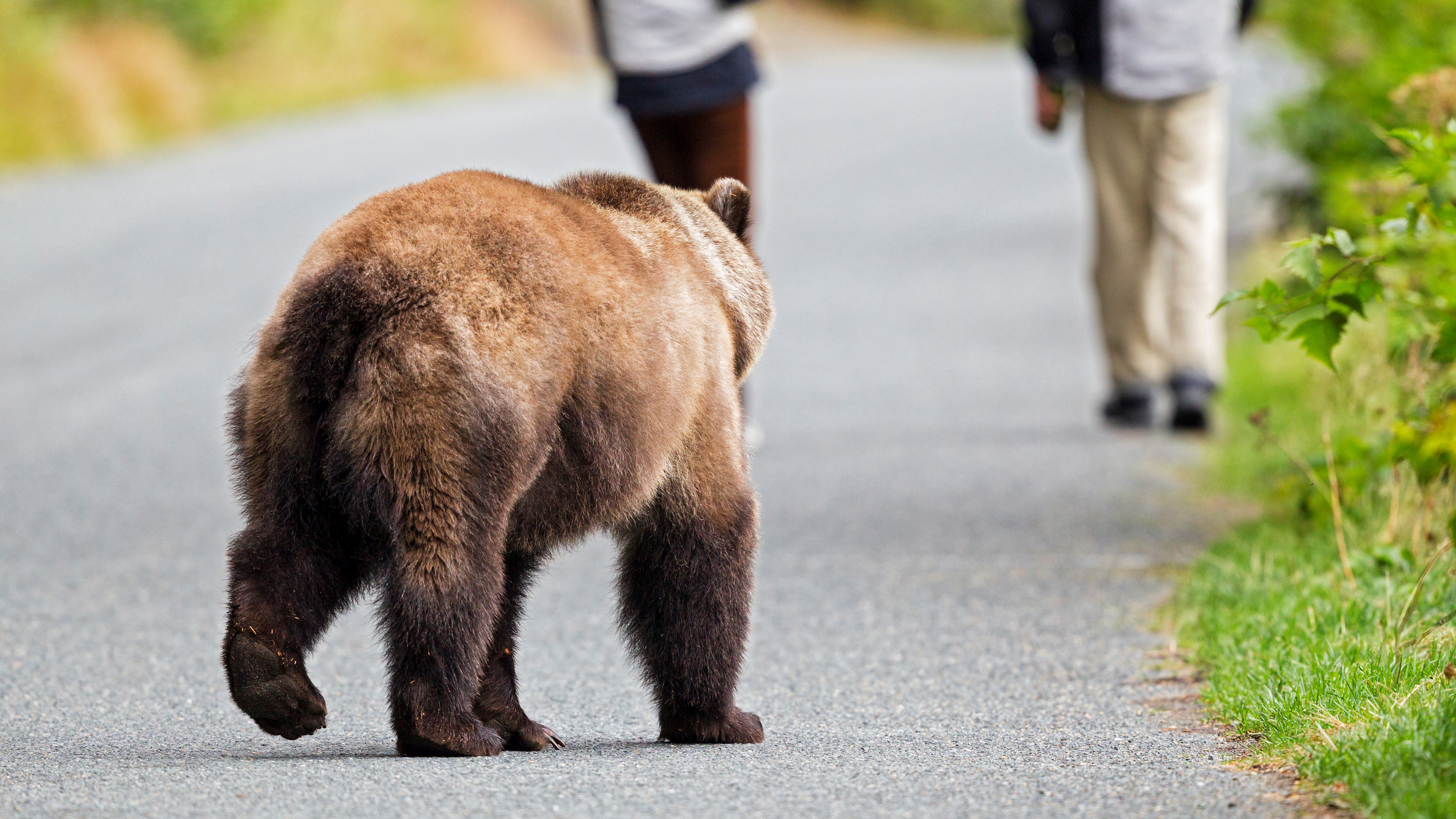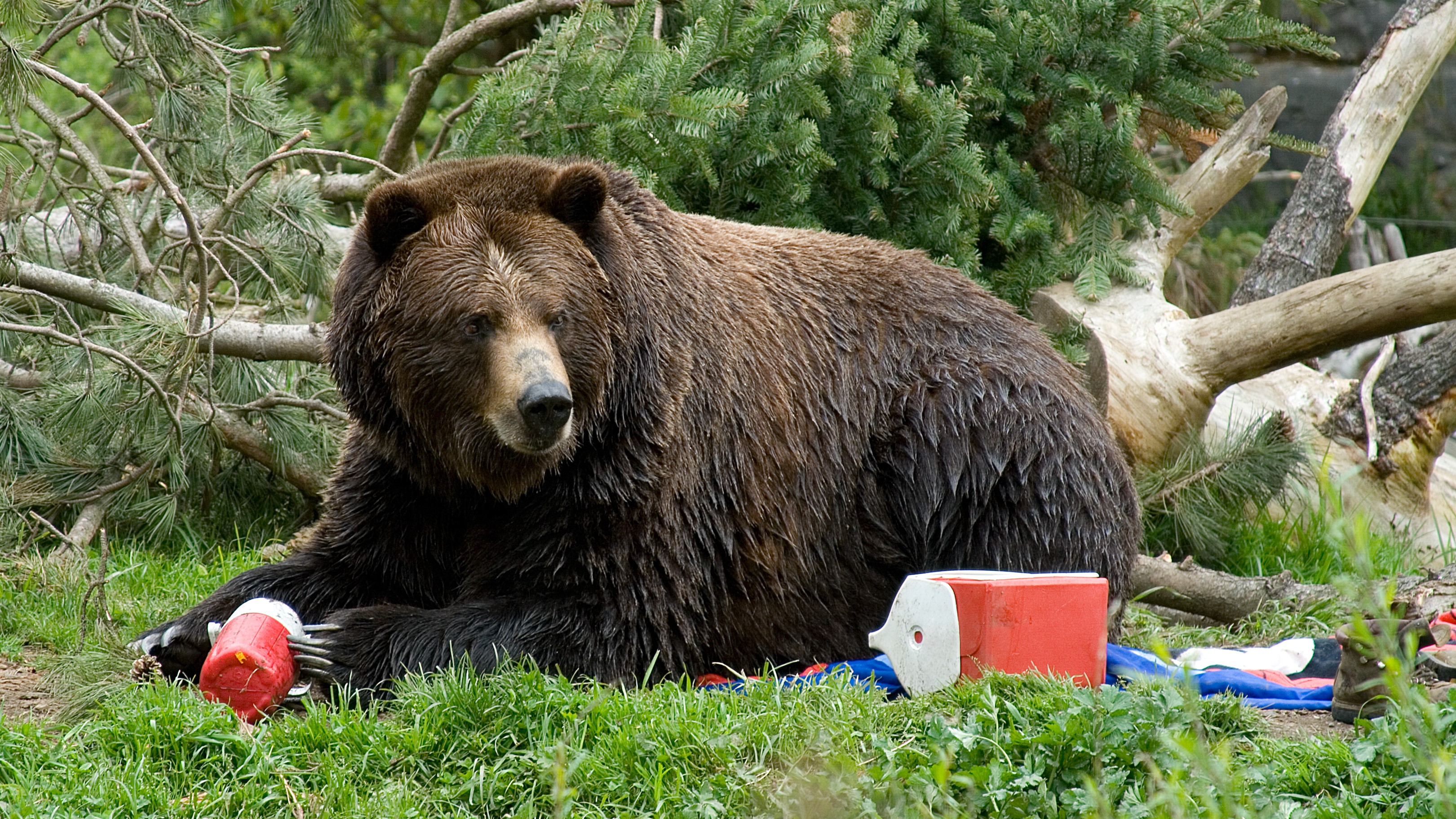
It's widely reported that bear encounters are on the rise, with the animals following hikers, trashing campsites, and breaking into tents. The issue is largely attributed to habituation – but what exactly is that, and what makes it such a problem?
According to the National Park Service, habituation happens when an animal is repeatedly exposed to a stimulus, and eventually stops responding to it. Wild animals, including bears, are naturally wary of humans and usually prefer to keep their distance, but when they come across humans regularly and there are no negative consequences, the animals no longer see us as a threat and are more likely to stand their ground or even approach.
Habituation is dangerous for both animals and people. If an animal approaches a person and then feels threatened, it may lash out by biting, clawing, or goring them. If an animal attacks a person, depending on the state, officials may be required to capture and either relocate or euthanize it. Animals may also lose their fear of roads, which can cause accidents with cars.
Any wild animal can become habituated, but bears are particularly susceptible due to their intelligence, opportunism, and adaptability, which help them thrive in densely human-occupied areas.
Food conditioning
However, many recent bear encounters are actually a result of food conditioning rather than habituation, which as Kerry A Gunther and Travis Wyman state in their paper Human Habituated Bears, is a closely linked but separate issue.
Food conditioning happens when, rather than ignoring people, an animal comes to seek out humans and their habitats for rewards. US National Parks have greatly reduced food conditioning in bears since the 1970s, when many animals were used to being hand-fed at the roadside.
Since then, the National Park Service has banned people from feeding the animals, and taken strict measures to secure garbage, food, and other things likely to attract bears to avoid the behavior. Animals that persisted in trying to access human food were captured and either euthanized or sent to zoos.
All the latest inspiration, tips and guides to help you plan your next Advnture!

Habituated bears continued to be an issue, and parks were often affected by 'bear jams', where cars would back up as people stopped to watch the animals wandering close to their vehicles. To prevent this, the NPS focused on human rather than animal behavior, encouraging park visitors to keep their distance.
Staying safe
It's worth noting that, statistically speaking, habituated bison are a much greater threat than habituated bears in National Parks. At Yellowstone, for example, bison are responsible for injuring more people than any other animal, which recently prompted the NPS to launch a campaign imploring visitors not to "pet the fluffy cows".
The best way to prevent habituation, and keep both yourself and the animals safe, is to keep your distance and admire the wildlife from the safety of your best binoculars. If you're not sure how far away to stand, the NPS advises holding your thumb out at arm's length, and seeing if you can use it to obscure the animal from sight. If you can't, you're too close and should move back.

Cat is the editor of Advnture, She’s been a journalist for 15 years, and was fitness and wellbeing editor on TechRadar before joining the Advnture team in 2022. She’s a UK Athletics qualified run leader, and in her spare time enjoys nothing more than lacing up her shoes and hitting the roads and trails (the muddier, the better), usually wearing at least two sports watches.
